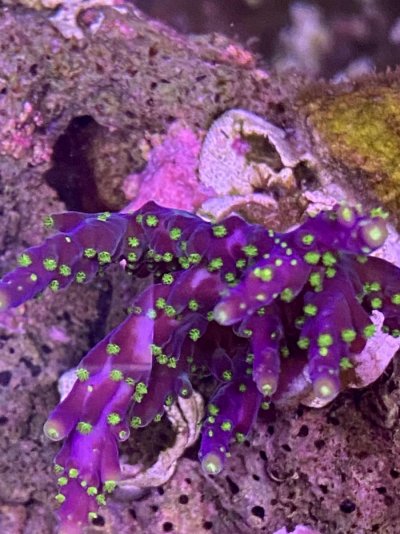This would render tanks with trickle filters and with ozonisation good tanks.Both support high remineralization and nitrate concentrations.
Why ozonization? In a marine aquarium?
Why would a tank with a trickle filter NOT be a good tank? Please explain.
I prefer a high remineralization rate which keeps DOC as low as possible.
A very low DOC content is most important for a healthy coral holobiont.
The use of biofilters makes it possible to manage the filtration capacity in combination with nutrient export rates, as desired by the user, at all times. In combination with managing the nutrient input, one has full control over the nutrient cycle.
AAM, active aquarium management.
A good biofilter does NOT support nitrate concentrations!!
Nitrification is reducing ammonia leftover after remineralization, ammonium not used up by faster growing organisms. Toxic ammonia is transformed into safely stored usable nitrogen. if produced nitrate is not used up it will not harm the livestock as would ammonia if not nitrified. 1ppm ammonia is transformed in +- 4 ppm nitrate, the difference in weight is represented by the amount oxygen present, 1ppm NH3-N = 1ppm NO3-N.
If in a closed system the nitrogen concentration increases one may be happy it is in the form of nitrate!
If the nitrate concentration increases this is because for some reason the nutrient reserve can not be used up.
Why usable nitrate slowly may build up in a well-lit aquarium?
Exporting or and reducing nitrate does not solve an existing nutrient problem!
A good biofilter prevents nutrients from building up in the system water, by installing the growth needed, supporting the carrying capacity. AAM!
Nitrate is easily exported using a biofilter, but why export nitrate and leave all other inorganic nutrients behind? Nitrate availability also represents the availability of other essential nutrients not used up yet. Why exporting only nitrate?
Because the nutrient balance is influenced by the use of a skimmer, DOC removed by a skimmer does not contain much nitrogen, only MAX +- 30% of DOC may be removed. (ref: MB CMF de Haes 2017-2019) Produced Inorganic nitrogen is released directly into the water column and is NOT removed by a skimmer.
Exporting nitrate as N2 may help to restore the nutrient unbalance created by the use of a skimmer.
The balance also can be restored by active algae management. AAM
Why do you consider a biofilter to be responsible for the presence of a nitrogen reserve? A remineralization filter restores the balance between nitrogen availability and other essential inorganic nutrients making it possible all essential inorganic nutrients to be removed by growth.
A skimmer plays an important role in the presence of a nitrogen concentration, it is responsible for creating a nutrient imbalance.
What is the danger included in the nitrate concentration?
Last edited:



















